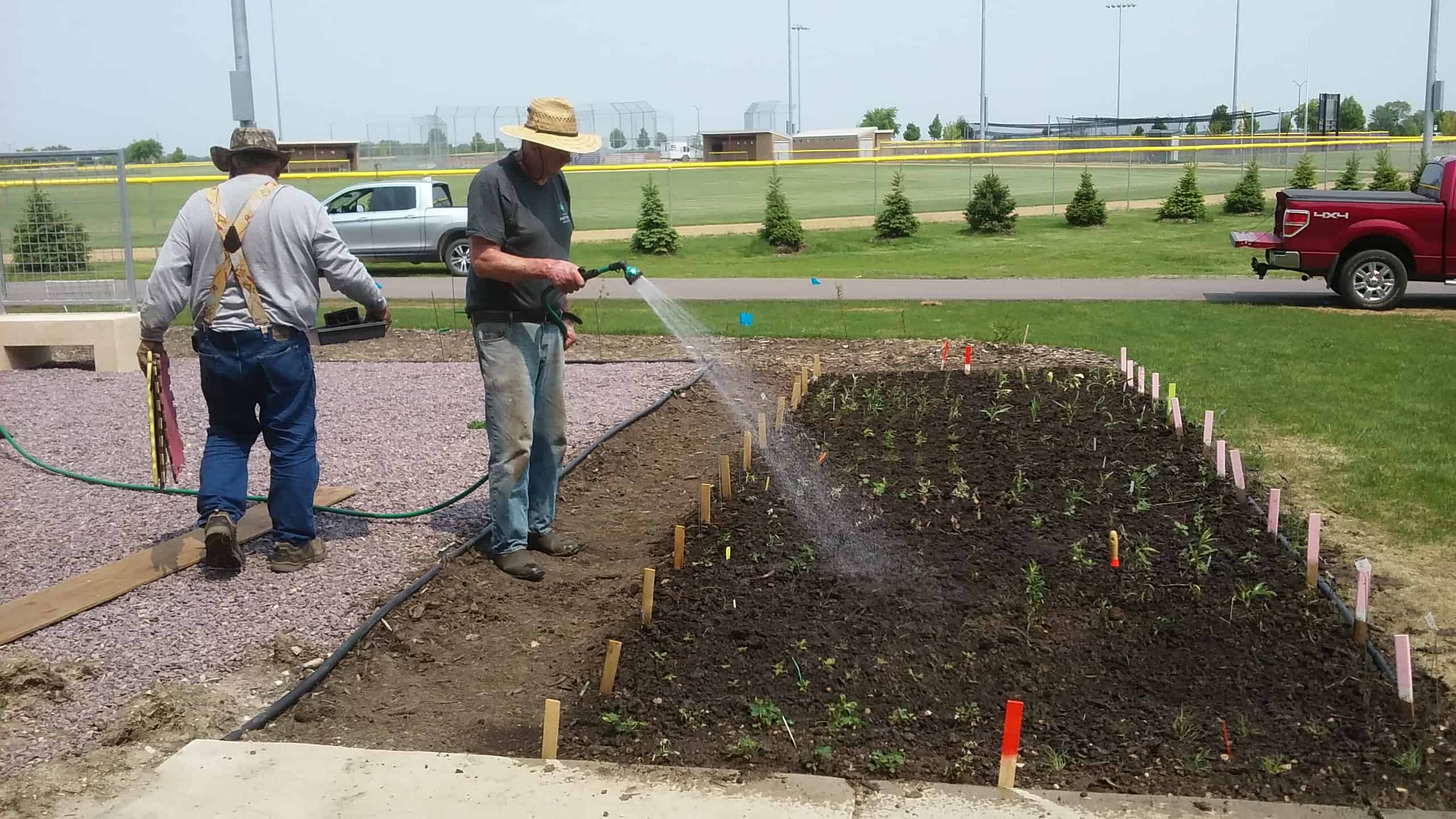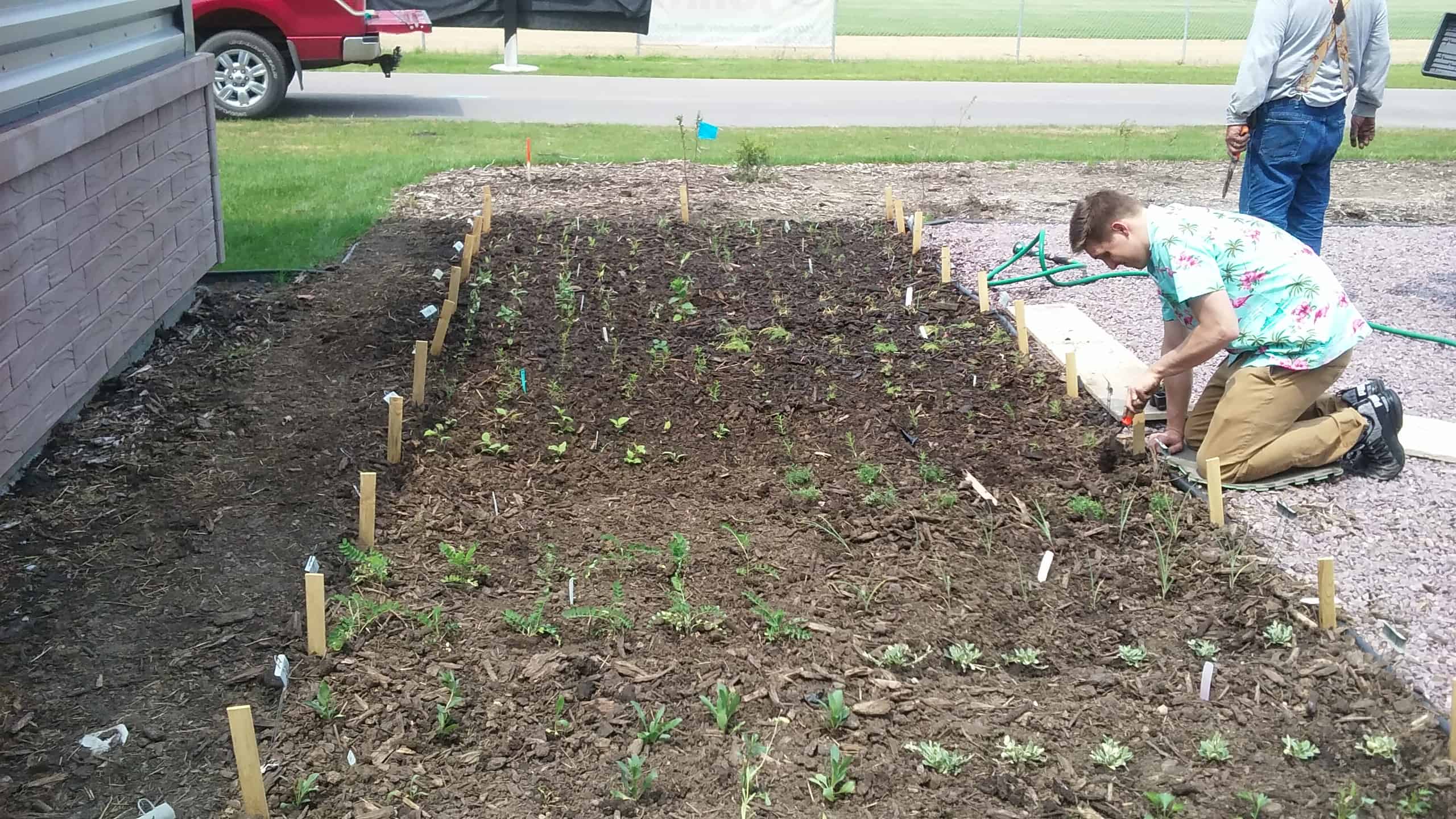By Jim Vonderharr
Many Rivers Chapter has recently started partnerships with several educational entities. We were contacted in the spring of 2017 by Amber Gremmels, a middle school science teacher in New Ulm, Minn. The New Ulm School District has two vacant residential lots next to it that were just being mowed. She envisioned converting one of them to a prairie, and making it a learning experience for students.
 Gremmels was looking for help. Our chapter worked with her, and over that summer we coordinated the clearing (Roundup) of about ¾ of one of the lots. That fall, fellow chapter member Henry Panowitsch and I broadcast seeded the plot with a mix of grasses and forbs. As expected, 2018 produced a typical first-year prairie project – a not-so-beautiful prairie. There were signs of desired plants, however, and this spring (2019) we mowed it. We are anxious to see what comes up and mow again throughout the growing season. We may add some seedlings or transplants.
Gremmels was looking for help. Our chapter worked with her, and over that summer we coordinated the clearing (Roundup) of about ¾ of one of the lots. That fall, fellow chapter member Henry Panowitsch and I broadcast seeded the plot with a mix of grasses and forbs. As expected, 2018 produced a typical first-year prairie project – a not-so-beautiful prairie. There were signs of desired plants, however, and this spring (2019) we mowed it. We are anxious to see what comes up and mow again throughout the growing season. We may add some seedlings or transplants.

To allay concerns that the lot was just a neglected “weed patch,” a sign was posted announcing our intended results.
In the fall of 2018, we were contacted by Matt Nelson, a high school science teacher in New Ulm. The school is relatively new (maybe 3 years old) and outside of his classroom is a space designed to be an “outdoor classroom.” Matt wants to make it a prairie education tool. It consists of sections, a couple covered with rock and benches, and several with wood chips.
Once again, Panowitsch and I, accompanied by Jim Lynch, ventured to New Ulm and visited with Nelson. The three of us made an impromptu presentation to his students, and we then discussed options for the project. This time we decided to use a majority of the area for plant identification, which meant buying established seedlings. Because of the cost associated with this plan, we contacted the New Ulm Chapter of the Izaac Walton League for assistance. They have funds from charitable gambling available for investment in their community. They enthusiastically volunteered to support the project and have contributed $1,000.

We also hope to help Nelson develop and stock a library with prairie resource materials. Buoyed by enthusiasm for these two projects, we have recently joined a group at Minnesota (Mankato) State University (MSU) that is working on a teaching curriculum that will include prairie education. Julia Batten, a Mankato East High School teacher is a member of the MSU curriculum team. We are hoping for the prairie “bug” to infect Mankato schools soon.

Photos by Jim Lynch

